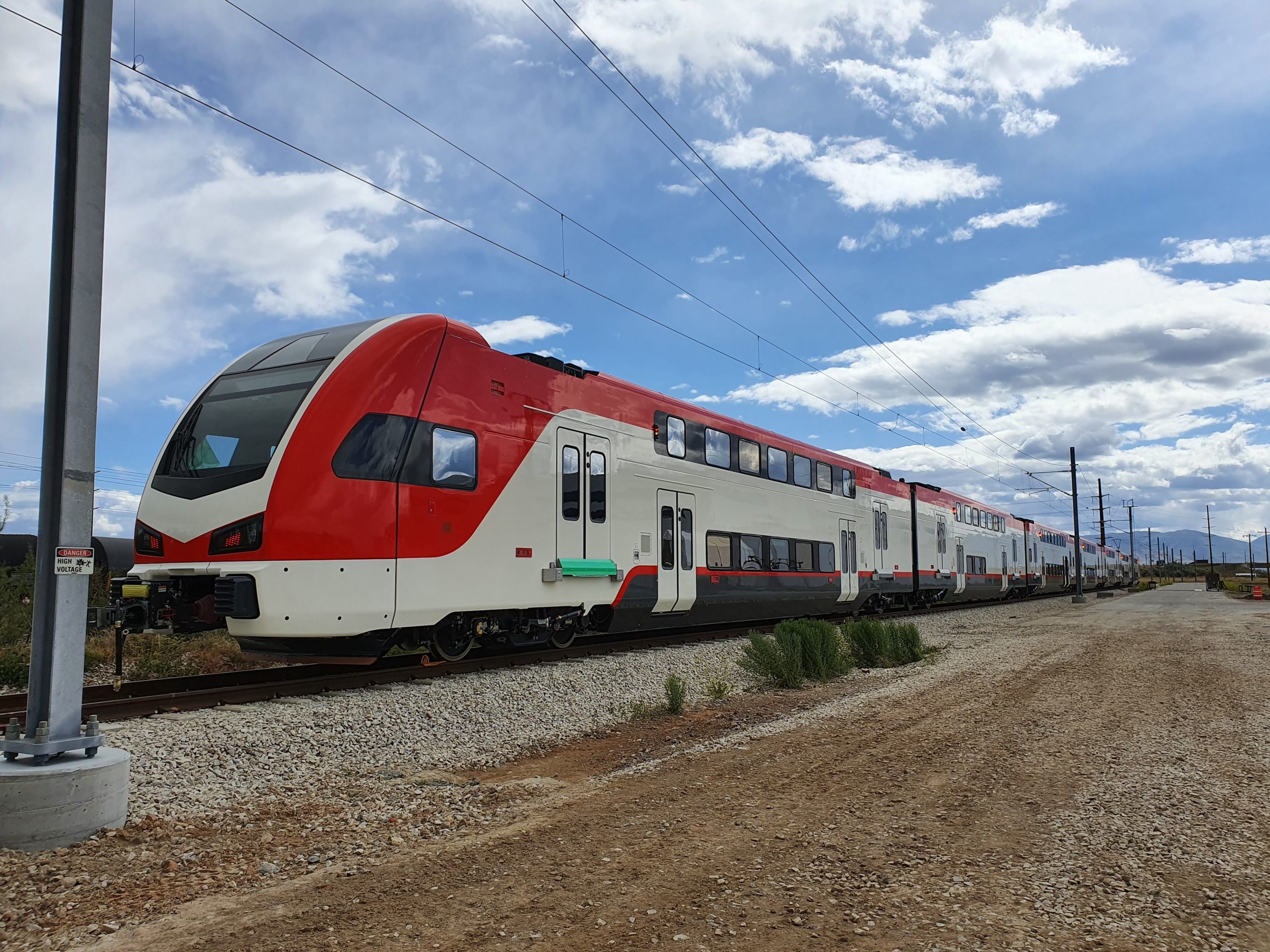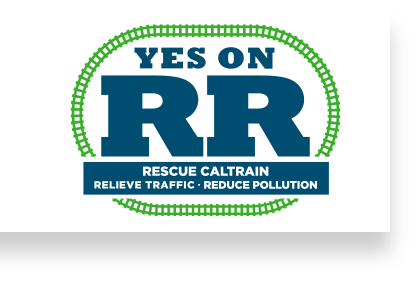Note: GJEL Accident Attorneys regularly sponsors coverage on Streetsblog San Francisco and Streetsblog California. Unless noted in the story, GJEL Accident Attorneys is not consulted for the content or editorial direction of the sponsored content.
What's quiet, non-polluting, travels at 80 mph, and carries the equivalent of six or more freeway lanes? A fully funded Caltrain, according to a new report from the Silicon Valley Leadership Group. The study shows that the passage of Measure RR, which provides a dedicated funding stream for Caltrain operations, would take 100,000 cars off the road, every day (albeit after a post-COVID economic recovery).
From the group's release:
The new Caltrain data, which was analyzed and released by the Silicon Valley Leadership Group, shows how critical Caltrain is to reducing air pollution and congestion in the Bay Area. Before the COVID-19 pandemic, Caltrain carried an average of 65,000 passengers per day. That translates to 56,522 cars, or four lanes of traffic, that are not clogging up Bay Area freeways.
CalMod, the infrastructure and modernization program to electrify the Caltrain system, is set to be largely complete by the end of 2021. These improvements will allow a newly-electrified Caltrain to boost its capacity by 30 percent, running up to eight trains per hour, per direction. That expansion would remove an additional two-plus lanes of car traffic off of Bay Area freeways by 2030, growing to five lanes above pre-pandemic levels by 2040.
These service upgrades that would take millions of additional cars off Bay Area freeways each year are dependent on whether or not Caltrain can secure the funding to pay for operations for these services. Caltrain relies on passenger fares for 70 percent of its revenue but ridership is down approximately 95 percent since the pandemic shutdowns began in March.
Of course, the "alternative" of adding lanes to Peninsula freeways would be pointless. They would quickly fill up, as always happens, inviting more traffic jams, delays, costs, emissions, and the subsequent crashes and carnage that comes with more vehicle miles driven.
Caltrain's current service and structure depend almost entirely on fares. Given the drop in revenue from the pandemic, without Measure RR funding the railroad could be forced to shut down, eliminating an essential mobility option for the Bay Area. “This would have a devastating impact on our communities. Tens of thousands of more cars on our roads and highways means more hours spent in soul-sucking commutes. It also means further degradation of our air quality, already severely impacted by wildfires," added Jason Baker, VP of Transportation and Housing at the Silicon Valley Leadership Group. "Voting Yes on Measure RR is a step in the right direction of reversing these potentially devastating trends and improving our quality of life in the Bay Area.”
Read more about the study here. And check out Streetsblog's endorsement post here. And if you live in San Francisco, San Mateo, or Santa Clara counties be sure to vote "yes" on RR!
For readers who might be curious how the electrification project is progressing, Caltrain provided a cab-view video of the entire right of way, taken in July. Nearly the whole route now has electrification poles installed, awaiting the stringing of wire. The first electric trains should leave the station sometime in 2022.






